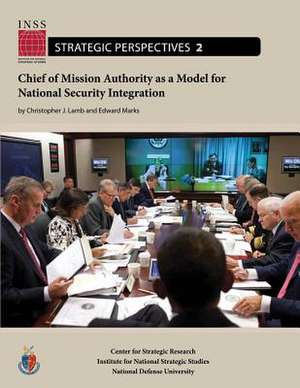Chief of Mission Authority as a Model for National Security Integration
Autor Christopher J. Lamb, Edward Marks, National Defense Universityen Limba Engleză Paperback
Preț: 86.39 lei
Nou
Puncte Express: 130
Preț estimativ în valută:
16.54€ • 17.97$ • 13.90£
16.54€ • 17.97$ • 13.90£
Carte disponibilă
Livrare economică 31 martie-14 aprilie
Preluare comenzi: 021 569.72.76
Specificații
ISBN-13: 9781478193401
ISBN-10: 1478193409
Pagini: 50
Dimensiuni: 216 x 279 x 3 mm
Greutate: 0.14 kg
Editura: CREATESPACE
ISBN-10: 1478193409
Pagini: 50
Dimensiuni: 216 x 279 x 3 mm
Greutate: 0.14 kg
Editura: CREATESPACE
